Foreign aircraft landings at Baldonnel and Collinstown Aerodromes, Dublin 1935 to 1945.
Baldonnel Aerodrome located south of Dublin city was the headquarters of the Irish Air Corps throughout the war years and remains so to this day. As it was one of only very few established airfields in Ireland at the outbreak of war the airfield was known internationally as one of the main airfields in Ireland. Indeed, as well as being the head quarters of the Air Corps, Baldonnel also functioned as the main civilian airport in Ireland. It was from here that Aer Lingus operated their airline flights to the United Kingdom. Civilian flights moved to the new airfield at Collinstown, to the north of the city, in 1940.
Collinstown Aerodrome, Ireland's new international civil aerodrome, was built north of Dublin city on the site of a former Royal Air Force airfield. Built from the offset with concrete runways, Collinstown was equipped to the latest standards when it opened for operations in 1940. It was immediately however caught in the middle of conflict and flights were greatly curtailed.
Being operational airfields, Baldonnel and Collinstown were marked on navigation charts and thus became a port of call for a small number of Allied aircraft throughout the war. These were a varied collection of mainly training types which found themselves lost and with dwindling fuel. The two Irish aerodromes allowed them a safe haven and a place to refuel, not just machines but mind and body also.
| Date/Format | Aircraft | Identity | Operator | Unit | Location | |||||||
|---|---|---|---|---|---|---|---|---|---|---|---|---|
|
January 28, 1942 |
Hawker Hurricane I |
V6573, '29' |
RAF |
59 O.T.U. / Crosby-on-Eden, Cumbria |
Dublin Airport, Colinstown |
|||||||
|
A British aircraft first
sighted 8 miles N.W, L.O.P. Dunany, Co. Louth,
moving west at 15.36 hrs. on 28th January, 1942, was
subsequently sighted west of L.O.P. Cardys Rocks,
Balbriggan, moving S. and was finally observed
circling low over Collinstown aerodrome at 15.51 The pilot, Sgt Salvator Bassi WALCOTT R/79006, an American serving in the RCAF was allowed to depart following a rest and later transferred to USAAF after a period of internment with the Vichy French in North Africa. He served in combat with the USAAF in North Africa during the North African campaign. His story is told in the book "Spitfire Deserter" by
Bill Simpson. One item of note from the book is
that much stress is placed upon an apparent dislike or
distrust of Sgt Walcott by his Squadron mates in 603
Squadron, due in part to the death of a fellow American
pilot, P/O William Irving Jones J7938 RCAF on the 26
March 1942. A history of the Squadron states that
the pair collided during a practice flight. P/O
Jones' aircraft, Spitfire BL510, crashed. The
Squadron ORB for that month appears to have been lost or
at least failed to make it to the Air Ministry, as
evidenced by a letter in the ORB from November 1943,
stating that the unit could not account for there being
no ORB. However, within P/O Jones' service file is the RAF Form
765 which makes no finding of a collision between him
and the other aircraft. It was thought by the Squadron
C/O S/Ldr D Douglas Hill on the day of the crash that, 'Pilot appears to have left if too
late to pull out of a high speed dive; or he may
have lost consciousness earlier."
The station commander, W/C Ian R Parker, recorded two
days later: "The case
appears to be a clear one of structural failure due
to excessive load. Both wings and tail unit
fell on one side of the aerodrome and the fuselage
on the other. The pilot was carrying out an
authorized flight and was dog-fighting at 10,000
feet when he commenced to dive. I heard a
report when the aircraft broke up and first saw it
in a flat spin at about 1500 feet. Both the
outer halves of the wings were missing and also the
tail unit, I do not consider any enquiry other than
A.I.B. would serve any useful purpose." If the official record is to be believed, the animosity
directed towards Sgt Walcott must stem from some other
reasons rather than the crash itself. The inadvertent landing resulted in the RAF reporting
Sgt Walcott missing on the day he failed to return on
time. Telegrams were sent to the relevant offices
reporting the aircraft serial number, pilots name and
the take off time of 14:22. The aircraft carried
eight guns but only two were loaded. By the
evening of January 29th however, word had been received
at 59 OTU that he had landed at Aldergrove in Northern
Ireland. He served with the USAAF as an officer with the serial
number O-885686 and was back in the USA based at Bradley
Field, Connecticut with the 540th Fighter Sqaudron, a
training unit that never deployed overseas. He was recalled to USAF service in August 1946, and
left again in November 1952, but remained on the
reserve. Sadly, following his wife's death, he
took his own life on 5th July 1962. The aircraft he flew to Dublin in, V6573, was a
Hurricane I fighter delivered to the RAF in August of
1940. It was posted to numbers 310, 73 and 85
Squadron during September and November 1940 but stayed
with the latter unit until March 1941, when it was
placed with 52 OTU. It next went to 59 OTU in
december 1941 where its wartime career took an
interesting path. It visited Ireland in January
1942 as described here, was damaged in march 1942 when
it was taxied accidently into another aircraft. It
was repaired at Taylorcraft during that Spring and
Summer, and posted to 55 OTU for more training
duties. It was here however that its war ended as
it was involved in a mid air collision on the 28
February 1943 with another Hurricane, W9170. Both
aircraft were lost, the pilot of V6573 escaped with
minor injuries, but the pilot of the other aircraft was
killed. |
||||||||||||
|
April 17, 1943 |
Boeing B-17F-70-BO Fortress |
42-29755 |
USAAF |
Air Transport Command (Ferry Flight) |
Dublin Airport, Colinstown |
|||||||
|
This aircraft was noted flying over Cavan and eastern
counties. It was fired on by Irish anti-aircraft
batteries around Dublin and landed at 12:30.
Following refueling with 44 gallons of 100 octane fuel,
it took off again at 18:30 for a base in Northern
Ireland. The aircraft was on delivery flight from North Africa and the Irish Army recorded that, "It was obvious from the material carried that the plane was on a transport flight".
1/Lt Cecil WALTERS O-664094 The aircraft was assigned to the 96th Bomb Group
initially but was then issued to the 533rd Bomb
Squadron, 381st Bomb Group in July 1943. It survived the
war and returned back across the Atlantic after the
conflict. The 96th Bomb Group transferred to the UK
during April 1943. Their aircraft, tail number 42-30370, with the nose art 'Little Caeser', was returning from a raid on Warnemunde, Germany on 22 July 1943 when it collided with another USAAF bomber from the 381st BG. All of the crew were lost on that occasion including eight of the men who landed in Dublin. Their loss was recorded on Missing Air Crew Report (MACR) number 144 and in Sgt Barnett's records the following statement is found: SYNOPSIS OF CASE : The above
mentioned ten men formed part of crew of a B-17
which departed England on a mission to Warnenunde,
Germany. On the return trip, within a few miles of
English coast, another A/C from another group
collided with the plane in question just behind the
turret. At an altitude of 3,000 feet, the
collision was serious enough to cause subject A/C to
break up and fall in flames into the water. A
search was made by Air Sea Rescue but without
results. Although the accident was said to
have taken place 2 miles off Cromer, England, the
body of one crew member (Goodman) was washed ashore
2 days later nearly 50 miles away.
His local newspaper carried the news of his being
posted missing in late August 1943. His mother was
presented with his posthumous Air Medal and Oak Leaf
Clusters in November 1943 at a ceremony at Abilene Army
Air Base.
2/Lt James C OLSEN O-736318 Missing in Action, from Minesota. The son of Ruth and Walter Olsen Minneapolis. S/Sgt Barnett H GOODMAN 35285949 The son of
Leah and Morris Goodman of Mile End old Town,
London. He was born in London in 19. He
sailed to New York in 1928, listing his occupation as
hairdresser, bound for Toledo, Ohio where he would live
with his Aunt and Uncle, the Beelman's. He
submitted a petition for naturalizaton in January 1943,
while training at Biggs Field, Texas. In a rather strange turn of events, the following
article appeared in local newspapers outside Toledo
around the 10th and 12th of April, 1943. Letter By Parachute Falls To
Ground on Wagner Farm Wagner, ho with his sister,
Ava, operate Wagner's Tavern, was in the fields
outside his home plowing by tractor, when he glanced
upward and saw a tiny parachute slowly floating down
toward the treetops. Retrieving the object when it
landed, Wagner discovered the chute to be made from
an ordinary white handkerchief, weighted by an empty
shell case attached by strings to the four corners
the cloth. The Wagners sent the message
to the Toledo couple and are now waiting to hear the
rest of the story. Miss Wagner, reported she had
heard a fly over shortly before her brother found
the unusual missive
Franklyn newspaper notices from August 1943 reported on the news being received by S.Sgt Wolozyn parents of his loss. He had enlisted in July 1942, and took his basic training at Keesler Field and seen gunnery training at Las Vegas, completing this in September 1942. He was later posted to Spokane, Washington before posting to the 96th Bomb Group at Pyote, Texas. The photo shown is from his Franklyn High School year
book of 1939, where he is described as "blustery,
happy go lucky, pleasant"
S/Sgt Rowland DOMENICK 35390046 Missing in
Action, from Piedmont, West Virginia, son of Concettino
and Lewis Domenick. His brother Sylvie also served
during the war, in the Army. The Cumberland News
of 7th of August 1943 published an article unpon
receiving news of his being posted missing: The War department has notified M.r
and Mrs. Lewis Domenick, Piedmont. that their son
Staff Sgt. Rowland Domenick, has been
missing in action off the English coast since July
29. Domenick enlisted in the army Aug. 3. 1942 and
was inducted at Fort Hayes, Ohio, August 17 and was
later transferred to St. Louis, where he
volunteered for aerial gunner in the air corps. He
went to Las Vegas, for six weeks of training and
graduated with a sergeant's rating. He also served
at Salt Lake City, Utah, Spokane and Wpah, Wash. He
next went to Blaine Field, and from there to El
Paso, Texas and later to Kansas City, Mo. The newspaper in January 1944 reported on his mother
having been awarded his Distinguished Flying
Cross. This followed up on an Air Medal and three
Oak Leaf clusters. Media reports credited him with
two enemy aircraft and having flown five missions. The family celebrated a mass for Rowland on 8th
September 1944 in St Peters Catholic church .
Shortly after his arrival in England, he was reported
on in newspapers all over the US following a bombing
raid: Waist-gunner of a
Flying Fortress that participated in the raids over
Bremen and Kiel on June 13, Sergt. Joseph H. Truitt,
Repton, Ky., takes the week's prize for terse
reporting. "I got a Focke-Wulf as it came in at 11
o'clock (from the north-north-west)," Truitt
related. "Shot off his life wingtip and it hit
against the side of our ship. He went for
good."
MISSING IN ACTION-Staff
Sergeant Joseph H. Truitt, of Owensboro, son of Mr.
and Mrs. L. C. Truitt, of Repton, has been missing
in action since July 29, just a year after he
entered the army. Sgt. Truitt was an armored
gunner in a flying fortress in the air corps and had
been stationed in England.
This photo from Edward Quigley's album shows, Jim
Olsen, Edward Quigley and Cecil Walters, with the
following written on the back of the photo: In front of Edge-water Gulf Hotel,
Gulfport, Mississippi. (March '42). Two weeks here
after emergency landing on Test flight.
|
||||||||||||
|
June 29, 1943 |
Avro Anson I |
LT985 |
RAF |
9 (Observer) AFU |
Dublin Airport, Colinstown |
|||||||
|
This aircraft was noted flying over Waterford, Kilkenny and Carlow folowed by a landing at 14:35 short of fuel. It was given 94 gallons of fuel and took off at 17:25 for Wales. The Irish Army recorded the men by rank and surname only and this greatly hindered the identification of the men, however, using the Royal Air Force and Royal Canadian Air Force records it was possible to firmly identify the pilot, and make two very likely suggestions for the two trainee Navigators. P/O Edward Brian CHURCHILL 123246 P/O JONES P/O Harold Leon KEMP RCAF"
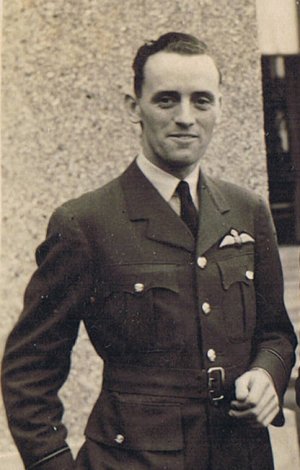 P/O Edward Brian CHURCHILL 123246 Edward Brian Churchill was born on 18th March 1918 in
Dudley, Worcestershire, his parents were Edward &
Kathleen Churchill. "Brian" married Ivis
Mary Hurry, while they were both in the RAF during
World War II, at Perranporth, Cornwall. Unfortunately.
Brian was killed after only seven years of marriage,
leaving three children; Robert, Alan & Heather. Brian's family were able to provide a copy of his log
book page for this flight.
"I only have word of mouth
info that came from my mother - who died about 6
years ago - that my father was involved in an
'incident' where they got lost over Ireland on a
training flight during the war. He was forced
to land but they allowed him to refuel and sent them
off again - the story goes that they even gave them
a stash of Guinness! Brian did his preliminary pilot training in Rhodesia
after escaping Singapore where he had been serving as a
weapons mechanic in the RAF but flying was his aim and
passion. He served at several stations in the UK
but actually didn't get into a regular squadron until
right at the end of the war in 9 Squadron. His record of service is in the back of his logbooks
showed he started out as a young aircraftsman in 1935 at
West Drayton and ended up in Singapore 1937/41. He
remustered and trained in South Rhodesia for pilot
training until July 1942. Then in several places on
Oxfords and Ansons, including Strathhaird, Bournemouth,
Shawbury, Condover, Stradishall, Upwood,
Penrhos He had about 425 hrs up by the time
of the 29 June 1944 incident. The ATDU was the Air Torpedo Development Unit (ATDU).
|
||||||||||||
|
October 12, 1943 |
Avro Anson I |
LV139, ED-4 |
RAF |
12 AGS, Bishopscourt, NI |
Dublin Airport, Colinstown |
|||||||
|
This crew were on a gunnery training mission from 12 Air Gunnery School based at Bishopscourt in Country Antrim, Northern Ireland, but lost their target and then their way in poor visibility. The pilot was planning to ditch but saw land. They were refueled by the military at Collinstown and took off again at 17:40 and returned to their base. Sgt Stuart CHAMBERS 1576381 LAC Sydney BIRD 1494307 The Irish army having recorded his serial number, one
finds sadly that this airman did not survive the
war. Sydney was the son of Joseph and Mary Ann
Bird, of Eston, Normanby per the CWGC records. The
family lived on Lambton St, Eston in 1939. Sydney
was 20 years old at the time of his death per the
records provided to the CWGC. His age on the
England/Wales death register was recorded as 21 years
old. Sydney died on 4 May 1944 when Halifax BB316 aircraft
of 1662 Heavy Conversion Unit crashed returning to its
base with engine trouble killing all but one of those on
board. He was one of six brothers, of whom two,
Joseph and George, had died as children. Their
mother Mary died He is buried in Eston Cemetery, Yorkshire. AC Reuben Edward FOULDS 1591122 Reuben Edward Foulds was born on 19 September 1924 to
Reuben Charles Foulds and his wife Beatrice (nee
Miller). He was posted to 101 Squadron in 1944, similar to D V
Dale, below. On his sixth mission he was shot down and killed along
with his entire crew. They and their Lancaster
ME565 were lost over Normandy on June 7th, 1944. He is remembered here on the South Anston War Memorial. AC Donald Victor DALE 1463201" Donald appears to have been born in London in January
1908, though a birth record cannot yet be found for
him. He married in 1938 to his first wife
Grace. They were resident in Conisborough
Crescent, Lewisham in the 1939 Register where his
occupation was Company Secretarys Assistant. He appears in the account given to the BBC by RAF
Veteran Jack Morley, who served with a 'Cockney' Don
Dale throughout 1944 from 28 OTU through to 101
Squadron. He served with 101 Squadron in the crew of George Henry
Gordon Harris, later awarded the DFC for his service. Donald married again in 1951 and passed away in 1993 in
Honiton, Devon. The Irish officers recorded the aircraft as being an
Avro Anson with serial number LU139 and carrying the
code O.4. The LU prefix was not used on any
British aircraft during the war. The correct
aircraft was rather LV139, and whose history is given in
the Air Britain book, the Anson File. This aircraft is listed as having spent its entire RAF
career with numbers 12 AGS and later 11 AGS at Andreas
in the Isle of Man. It entered service with the
French Air Force in 1946. It later passed to the
French Naval air arm, the Aeronavale around 1949.
|
||||||||||||
|
March 12, 1944 |
Armstrong Whitworth AW38 Whitley |
Unknown, 'T' |
RAF |
24 OTU |
Dublin Airport, Colinstown |
|||||||
|
Sgt Nelson Joseph McDonald R/168240 RCAF "F/O Albert Smitten J/35051 RCAF F/O Charles Reginald Laing J/35099 RCAF P/O Ernest John Simpson Wood J/88510 RCAF F/O John Robert Thackeray J/28989 RCAF Aircraft landed while lost on a training mission. The
crew signaled to the airport that they were in distress
and were given assistance to land at 17:54 hrs. The crew
reported they had been in the air for the previous seven
hours and must have mentioned that they were based at 24
OTU in southern England. It was noted by the military in
the Irish Army report that there was no one on duty at
weekends. The aircraft was recorded as having just a
letter 'T' painted on the side. 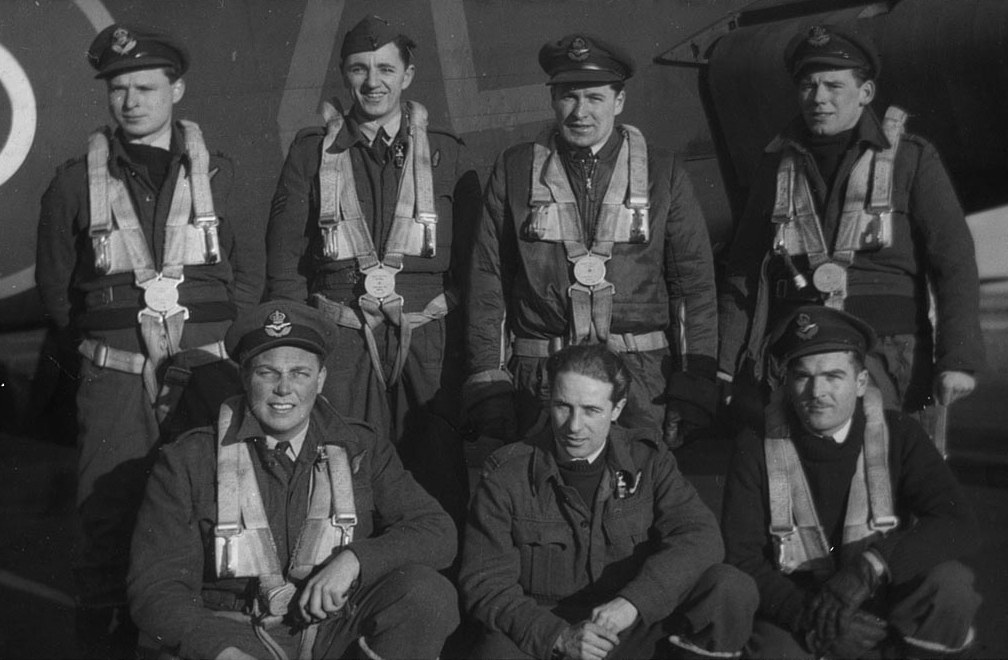 Four of the Canadian airmen are shown in the photo
above while flying with 427 Squadron RCAF. They are,
standing, at left, C R Laing and standing at far right,
J R Thackeray. Kneeling from the left are E J S Wood and
A Smitten. The pilot, Nelson J McDonald, was a Nova Scotia
born airman who had enlisted in the Royal Canadian Air
Force. He had moved with his parents Williams and
Elizabeth to Illinois in 1925. The Illinois newspaper,
the Suburbanite Economist, published the following short
article on Wednesday, July 7th, 1943: Go To Canada to See Son Receive
RCAF Wings Mr. and Mrs. William MacDonald,
7521 Normal ave,; will leave tonight for Alymer,
Ontario, where they will attend the graduation of
their son, Nelson J. MacDonald, who will recieve his
wings and become a first lieutenant in the Royal
Canadian Air Force. Charles Laing was born in 1920. He served served
with the R.C.A.F. for 23 years and then embarked on a 14
year career with the Ministry of Transportation of
Ontario. Charles passed away in April 2005 just two
years after making contact with the website about his
short visit to Dublin. In 2003 he wrote via email:
We (myself & rest of the
aircrew) were on a training mission to drop a few
practice bombs on a watery target. We became lost
somewhere over the atlantic ocean and received a
radio fix to alter course. We change course and the
first land that came into view was the coast of
Southern Irland. John Robert Thackeray was born in April 1925 in
Regina, Canada. He enlisted in October 1942 in Regina.
Following training in Canada, he would have been posted
to 24 OTU for crew training, it is expected that he
would then have gone with the crew to a Heavy Conversion
Unit where they would have learned to fly the Halifax
bomber. He moved with his wife Marie to America in 1952
and there raised a family in California. John, known as
'Jack' to friends and family died in Ventura,
California, on 19 October 2001. Albert Smitten was born in XXXX to Walter and XXXX
Smitten. His first son was born in November 1943 at which time
he was already overseas. His local newspapers made
great use of the fact that he was one of six brothers,
four of whom were in the RCAF. The brothers featured in the Edmonton Bulletin on the 4
Jul 1944, with Albert described as: Flight Officer Albert Smitten joined
the RCAF here in July 1942 He is 32 years old.
Before going into tho air force he took a brush-up
course with the training school. He is the only one
of tho boys fortunate enough to have all his
training here. In September 1943 he was
graduated from No 4 I.T.S. Ten days later he left
for overseas where he has been ever since,
His wife and son reside hare. 
Albert passed away in 2011 in Edmonton, a proud great
grand father aged 99. |
||||||||||||
|
April 22, 1944 |
Avro Anson I |
LT284, B-3 |
RAF |
7 (Observer) AFU, RAF Bishopscourt, N.I. |
Baldonnel Aerodrome |
|||||||
|
This event was an early morning landing at the airfield, the aircraft having been flying from Bishopscourt, County Down on a nighttime dead reckoning navigation flight. The crew of four and aircraft flew out at midday later that day. The air men on board consisted of the pilot, F/Sgt Twyford, a wireless operator instructor Sgt Westmore and two Canadian airmen, undertaking training in navigation duties in North West European conditions. All four men survived the war although one was shot down over Germany and made prisoner of war.
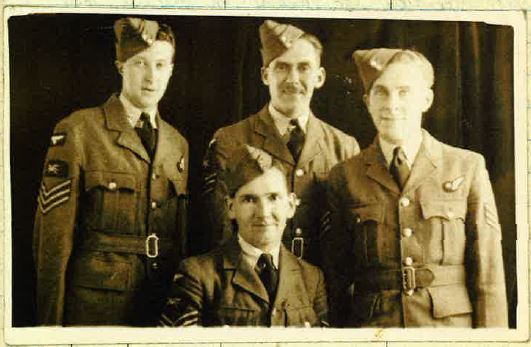
The colleague Ron refers to was F/Sgt Ronald S Schneer 1684911 who was lost in the crash of Anson DG972 on December 26th, 1943. Ronald Westmore had married in 1942 and returned to live in his native home. He passed away in 1989 in the Isle of Wight. His son was very kind in providing scans of his log book.
The remaining two airmen on the aircraft were
Canadian's undergoing acclimatisation flying having
recently arrived in Europe following training in Canada.
Morris Donald Berry was a young airman from Innisfail, Alberta. Amazingly, his log also survived the war and is the third record of the days flying. 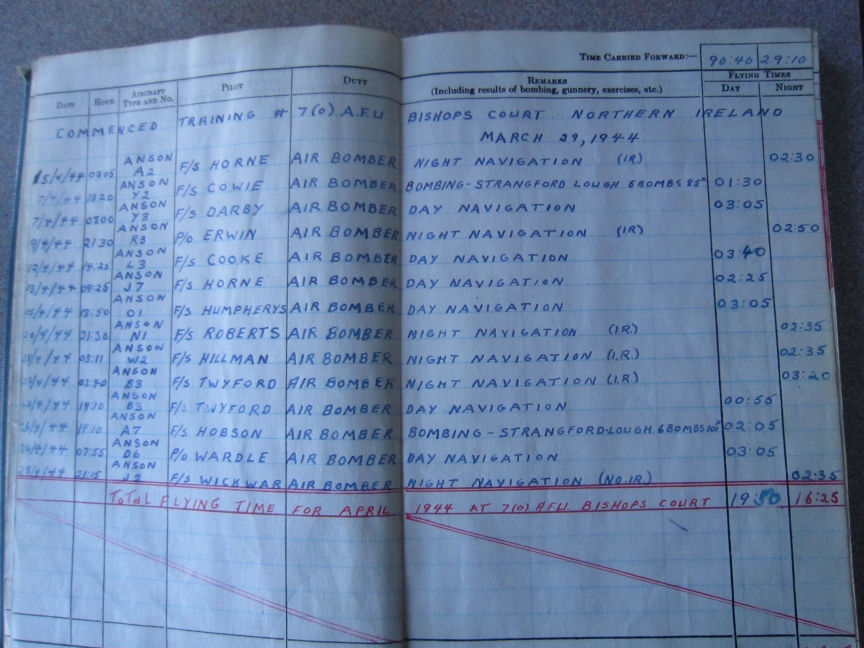
After his time in Northern Ireland he was posted to 425 Squadron, Royal Canadian Air Force. He completed 20 bombing missions with that unit before things went wrong in January 1945. He was the bombaimer on Halifax NP999 on the night of January 5th/6th 1945 when the aircraft was brought down over Germany. Morris was lucky enough to survive by bailing out with 5 of his crew mates however; their English Flight Engineer lost his life. He is shown below with his crew, Morris berry is the second from the right, standing. 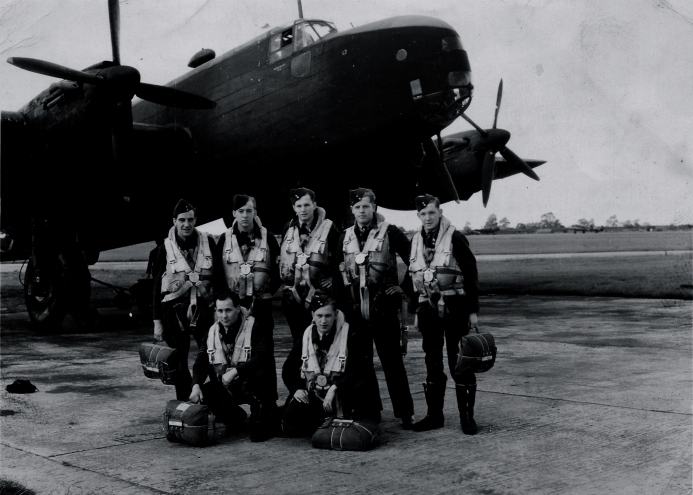
Morris spent the last few months of the war as a Prisoner of the Germans. He passed away in October 1986. This summary of the fourth airman, also a Canadian
named William McGregor Robinson comes from a
Canadian researcherís summary of his wartime service
record: ROBINSON, William McGregor (R.191608 and
J.38338) - Born 6 December 1910 in Glasgow, Scotland.
Enlisted in London, Ontario, 9 September 1942. To No.1
Manning Depot, 6 November 1942. To (illegible on
microfilm), 6 December 1941. To (illegible again), 15
January 1942. To No.5 ITS, 1 March 1943. Promoted LAC,
12 June 1943. To No.4 AOS, 26 June 1943. Graduated and
commissioned, 13 November 1943. To No.2 Aircrew Graduate
Training School, 18 January 1944. To "Y" Depot for
embarkation, 11 February 1944. Taken on strength of No.3
PRC, Bournemouth, 15 March 1944. Repatriated to Canada
by air, No.428 Squadron, 7 June 1945. Training for
"Tiger Force" when war ended; retired 10 September 1945.
|
||||||||||||
|
October 7, 1944 |
Avro Anson |
Unknown |
RAF |
Unknown |
Baldonnel Aerodrome |
|||||||
| Reviewed ACF-S-241 only and not the possible main file. Is mentioned on the lists in the F/A file A.26 in the NA; IMA #B103, Info will be in MISC 6/06 in MA and ACF-S-241 | ||||||||||||
|
April 5, 1945 |
Avro Anson I |
W1709, '42' |
RAF |
7 (Observer) AFU, RAF Bishopscourt, N.I. |
Dublin Airport, Colinstown |
|||||||
|
November 12, 1945 |
Boeing B-17G-70-DL Fortress |
44-6883 |
USAAF |
BADA, HQ Burtonwood, UK |
Baldonnel Aerodrome |
|||||||
|
Maj Frederick B. JOHNSON O-661102 S/Sgt Egon L ECK 35316683 Lt/Col James J SHOWN O-913379
The pilots own account in that accident report reads as
follows: The USAAF report also contains a statement from the Irish Air Corps officer commanding, Col. W P Delemere in which he states the conditions and causes similar to Major Johnson's report above. The aircraft was arriving from the USAAF airbase at Burtonwood, near Warrington in Cheshire. Irish Newspapers reported the aircraft carried members of the Irish Air Corps who were returning from a meeting in the UK however the USAAF crash report makes no mention of anyone other than US personnel on board. The USAAF crash report and the testimony therein from the Pilot Major Frederick B Johnson point out that he had flown into Baldonnel Aerodrome the previous week. It appears that at this time there was of talks taking place between the Irish Authorities and those of the US Government, perhaps about purchase of surplus weaponry. The aircraft itself was a Boeing B-17G Flying Fortress,
serial number 44-6883. This aircraft had flown in combat
with the 535th Bomb Squadron, 381st Bomb Group from
Ridgewell, Essex. On a mission on the 2nd March 1945 to
Chemitz in Germany, a pilot of the 381st Bomb Group, Lt
Charles Carpenter was forced to turn back with technical
problems and upon landing was assigned a spare aircraft,
44-6883. He took off quickly again to try catch up with
the remainder of the group but instead accidentally
found himself among a group of RAF Lancaster's on a late
war day light mission to Cologne. Online records make it
unclear as to whether it was before this event or
because of this event that the aircraft received in
painted nose-art of 'RAFAAF', to symbolize the Royal Air
Force - Army Air Forces. The 535th diary indicates that
the aircraft had two engines shot out on March 24th but
was brought back home safely on that occasion.
The photo below appeared on an Irish newspaper that
week, although the paper has not yet been identified. 
He enlisted in the air force in November 1941 and was
listed in his local newspaper as having graduated from
the Brooks Field, Texas, training school in the summer
of 1942. He is found being posted to to BAD1
in December 1943.
Egon returned to his native Cleveland post war and in
February 1950 married Mildred Navratil. His first
cousin, Bob Teutsch remembers Egon well and was able to
provide the photos of Egon with friends and colleagues
from during his wartime service. Egon's cousin Bill
Teutsch was completing his flying training in the USAAF
having enlisted in 1943. Egon passed away in June 1973. He had set up his
own trucking company in 1968 after working for other
organisations.
Before the war, his name frequently featured in Texas
newspapers as he was a member of the Texas Rangers
police force between 1933 and 1935 before transferring
to the Houston police force. The crash report lists his serial number as O-913379
which was his wartime officers serial number. The name also appears in the State Bar of Texas annual
publication of 1943 with the following text: On April 30 James J. Shown was
promoted to Captain in the Army Air Forces. He is
Commanding Officer of the 877th Guard Squadron at
Kelly Field.. From there
and with rank of Captain, he was posted overseas
around September 1943, he was in USAAF Station Stone
by mid November and then transferred to the 1 Base
Air Depot (BAD) and can be found at USAAF Station
590, Warrington, Lancashire in February 1944 taking
a period of leave. The Houston
Chronicle and other city newspapers in July 1944
published details of his wartime career at the time
of his promotion to Major. He was
reported to have returned back to America in June of
1946 in The Houston Post: In 1946,
the Armed Forces Journal International recorded
Transferred to Keesler from Randolph Field, Tex.,
on 23 Sept. was Lt. Col. James J. Shown of Houston,
Tex. Col. Shown is to assume command of the
Technical Training Command military police school at
this station.
The 1948 US Army and Air Force register contains an
entry for 'Shown, James J,
(O41672). B-Tex. 24.Feb.05. A.Tex. B.S.M..
The list of promotions after show an officer who joined
the force in August 1942 apparently as a direct entry
and who had reached the rank of Lt. Col. by April 16th,
1945. James Shown resigned from the military in 1950 and went
on to become an attorney in the state of Texas where his
name appears many times in legal cases. In 1952, he was
himself the subject of investigation in a fraud case
involving cars but was found not guilty. James Shown passed away Houston in 1966 and is buried
there. His first wife Rita was killed in an automobile
accident in 1932, and they had one daughter. His
second wife, Vera, passed away in 1959 after a long
illness. he was survived by his third wife, also
named Rita. |
||||||||||||
Compiled by Dennis Burke, 2025, Dublin and Sligo.

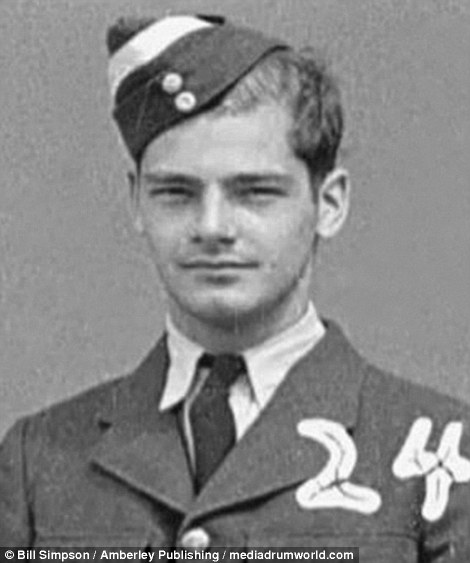 Aircraft landed and was
subsequently allowed to leave. The details of the
landing were summarized in an Irish army report filed in
the days after:
Aircraft landed and was
subsequently allowed to leave. The details of the
landing were summarized in an Irish army report filed in
the days after: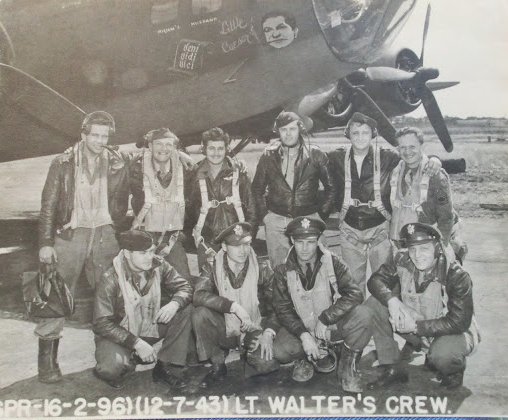
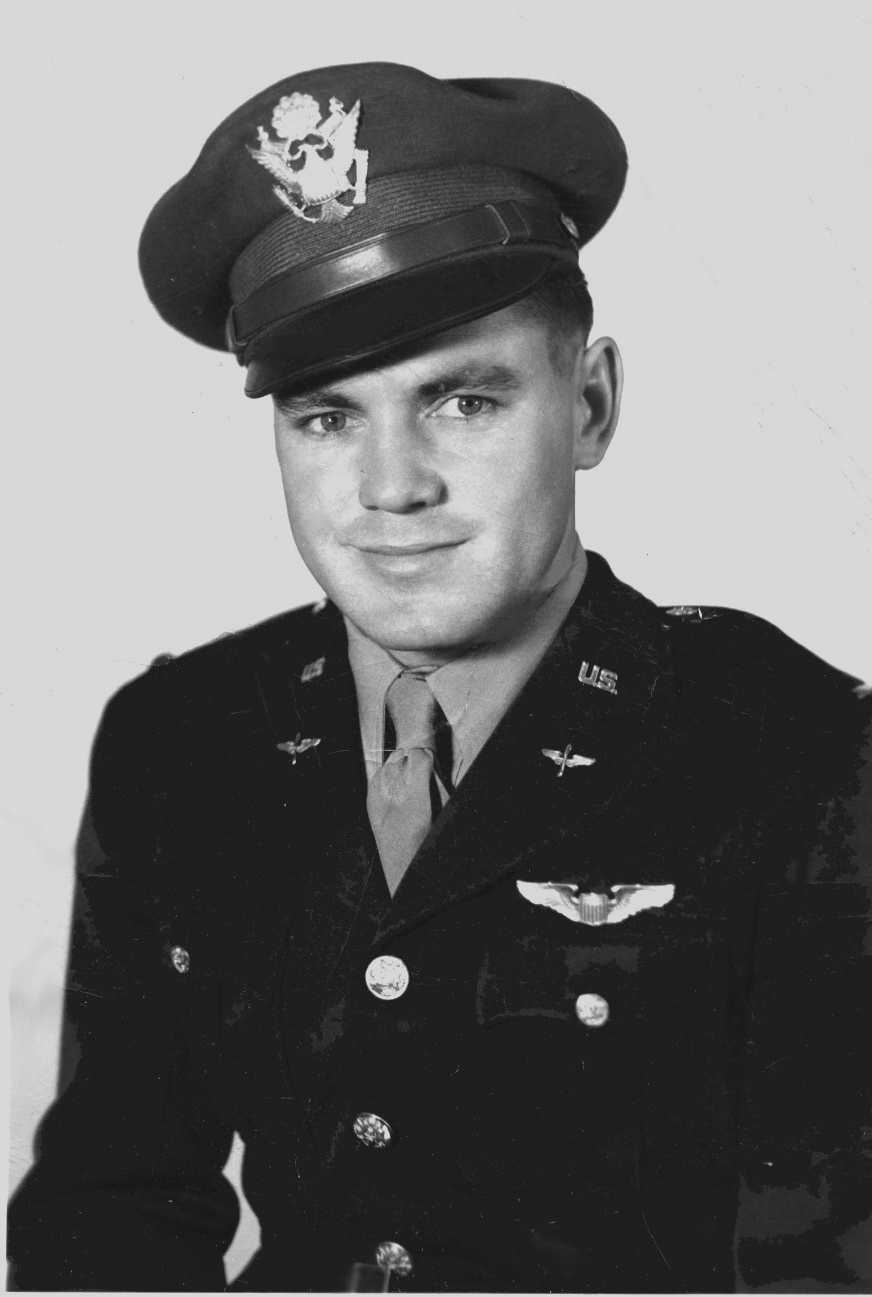 1/Lt Cecil O WALTERS O-664094,
Missing in Action, From Eastland, Texas. The son of
Willie and Willie Walters of Eastland, Texas. He
was a graduate of Eastland High school.
1/Lt Cecil O WALTERS O-664094,
Missing in Action, From Eastland, Texas. The son of
Willie and Willie Walters of Eastland, Texas. He
was a graduate of Eastland High school.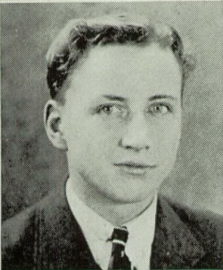 S/Sgt Joseph A. WOLOZYN 13087777 Missing
in Action, From Franklyn, Pennsylvania, son of Nellie
and Anthony Wolozyn.
S/Sgt Joseph A. WOLOZYN 13087777 Missing
in Action, From Franklyn, Pennsylvania, son of Nellie
and Anthony Wolozyn.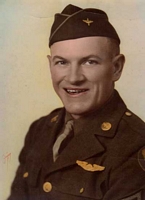 S/Sgt
Frank G. WADE Jr. 38204123 Missing in Action, From
Houstan, Texas. Son of Amelia and Frank G Wade.
His sister, Mrs Ray Brown remembered him on the
wwiimemorial website with a photo.
S/Sgt
Frank G. WADE Jr. 38204123 Missing in Action, From
Houstan, Texas. Son of Amelia and Frank G Wade.
His sister, Mrs Ray Brown remembered him on the
wwiimemorial website with a photo.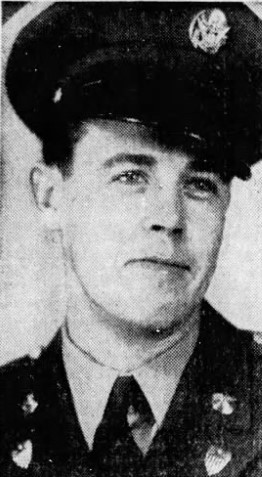 S/Sgt Joseph H. TRUITT 35487257
Missing in Action, From Marion, Kentucky, son of
Edna and Joseph Truitt, he was born in July 1919.
S/Sgt Joseph H. TRUITT 35487257
Missing in Action, From Marion, Kentucky, son of
Edna and Joseph Truitt, he was born in July 1919.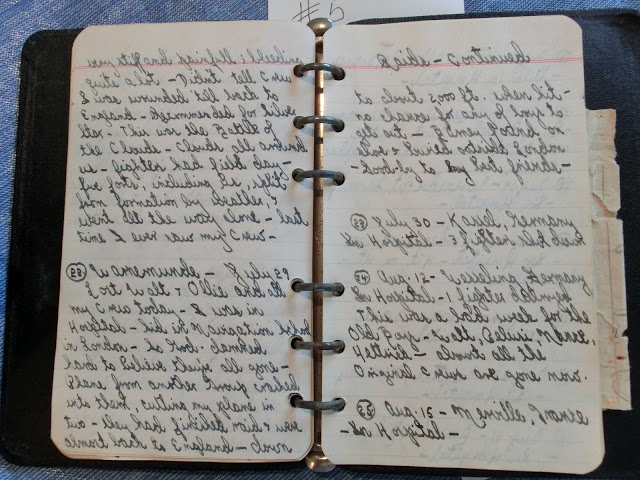
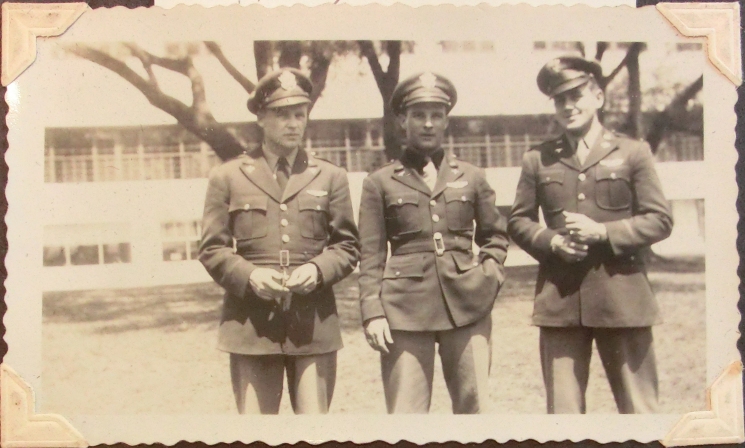
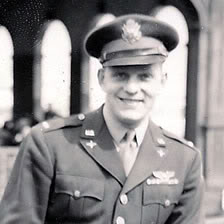 Sidney Rosberger also returned to
duty with the 96th Bomb Group, flying missions into
September 1943 with the crew of 2/Lt W F Bacon. His son
posted a large article about him on the Army Air Forces
Forum in May 2011 sadly that forum and its contents were
taken off the internet some years later. Lt
Rosberger changed his surname to Ross after the war and
passed away in 1980.
Sidney Rosberger also returned to
duty with the 96th Bomb Group, flying missions into
September 1943 with the crew of 2/Lt W F Bacon. His son
posted a large article about him on the Army Air Forces
Forum in May 2011 sadly that forum and its contents were
taken off the internet some years later. Lt
Rosberger changed his surname to Ross after the war and
passed away in 1980.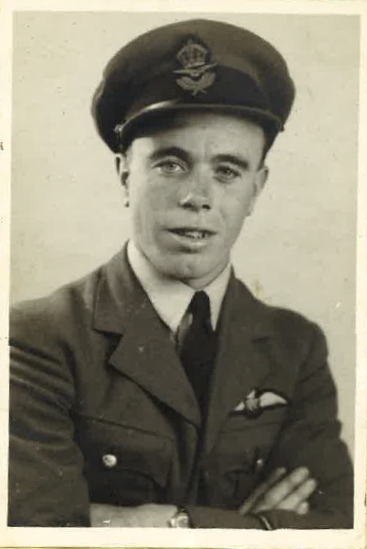 Raymond Twyford was a young
Warwickshire born pilot of the RAF Volunteer Reserve.
Raymond was posted to Rhodesia in May 1942 for pilot
training, this being completed successfully in December
of that year. He was then sent home on a vessel which
sailed first to Fort Slokum in New York, He transferred
then to Halifax in Canada from where he then sailed
presumably back to the UK. It was in September 1943 that
he was posted to 7 (Observers) Advanced Flying Unit,
then referred to as 7 Air Observers School. He remained
there as a staff pilot for navigators who had completed
their instruction in the vast empty skies of Canada or
Africa. His time at Bishopscourt ended in April 1945
with a posting out to 17 Operational Training Unit at
Silverstone where he converted to the Wellington bomber.
His first front line unit was Transport Commands 77
Squadron which was in the summer and autumn of 1945
converting to the Douglas Dakota transport.
Raymond Twyford was a young
Warwickshire born pilot of the RAF Volunteer Reserve.
Raymond was posted to Rhodesia in May 1942 for pilot
training, this being completed successfully in December
of that year. He was then sent home on a vessel which
sailed first to Fort Slokum in New York, He transferred
then to Halifax in Canada from where he then sailed
presumably back to the UK. It was in September 1943 that
he was posted to 7 (Observers) Advanced Flying Unit,
then referred to as 7 Air Observers School. He remained
there as a staff pilot for navigators who had completed
their instruction in the vast empty skies of Canada or
Africa. His time at Bishopscourt ended in April 1945
with a posting out to 17 Operational Training Unit at
Silverstone where he converted to the Wellington bomber.
His first front line unit was Transport Commands 77
Squadron which was in the summer and autumn of 1945
converting to the Douglas Dakota transport.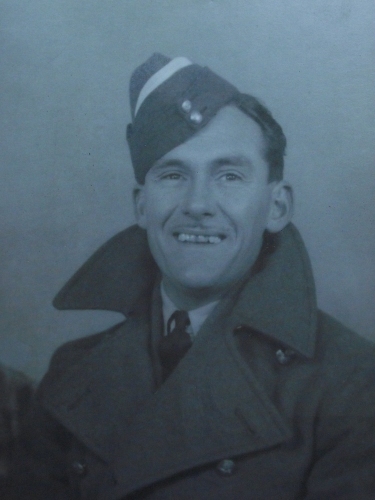 Ronald Valetine Westmore was
born in 1916 on the Isle of Wight. His surviving log
book contains some great narrative of his service up to
the time he arrived in Northern Ireland. To quote from
the log book:
Ronald Valetine Westmore was
born in 1916 on the Isle of Wight. His surviving log
book contains some great narrative of his service up to
the time he arrived in Northern Ireland. To quote from
the log book: 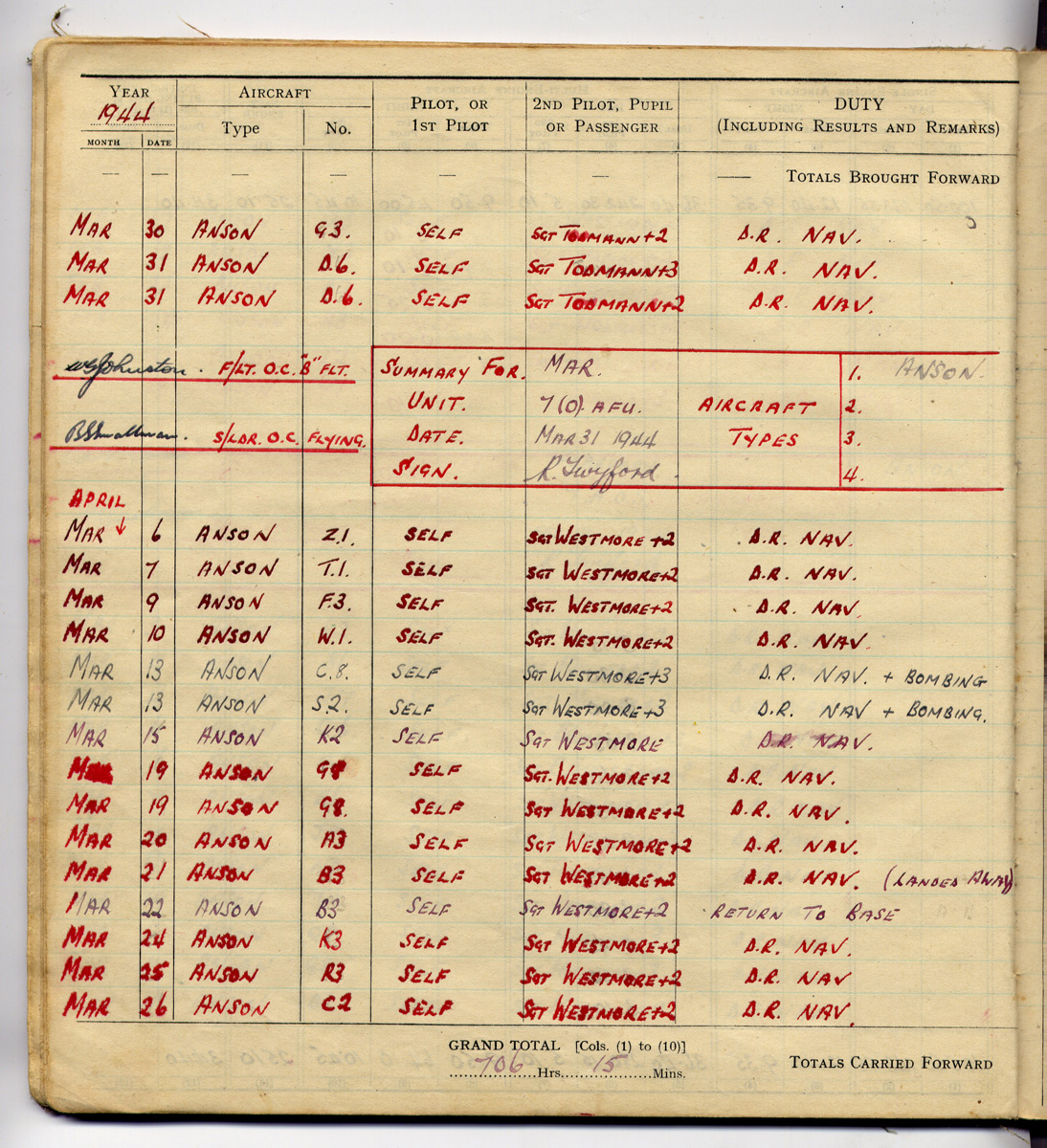
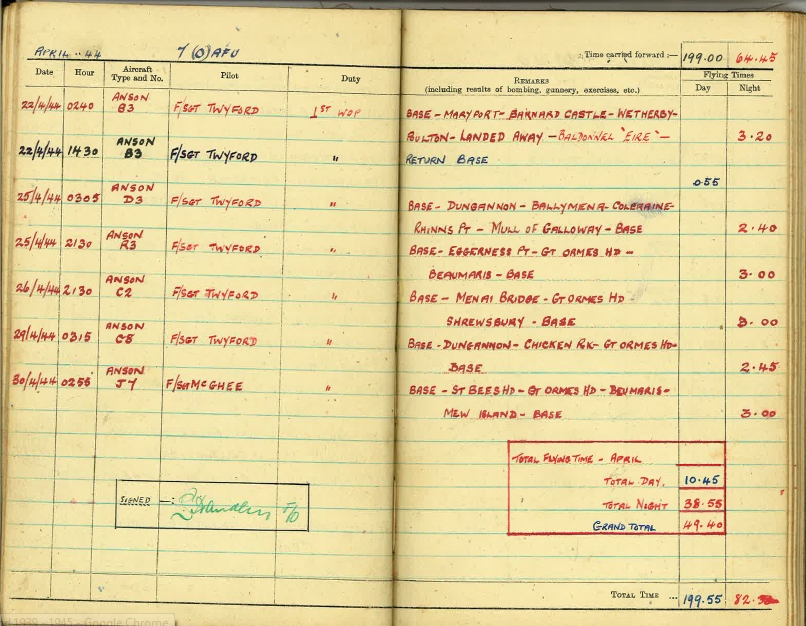
 Click
on button to read the story of Anson W1709
Click
on button to read the story of Anson W1709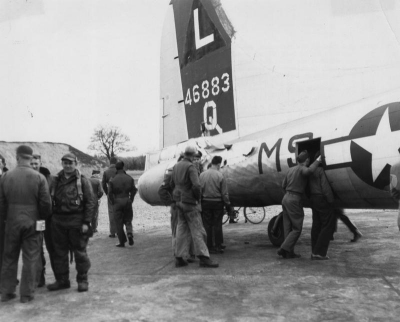 The
following month on April 11th the aircraft suffered the
complete loss of its right hand stabilizer and elevator
following a mid air collision with another B-17 while
turning after bombing Germany. The pilots of the
aircraft were lucky enough to be able to recover the
aircraft from a diving spin and were able to return to
base. Despite this damage, a new stabiliser was fitted
and the aircraft returned to flying. At some point it
was delivered to the USAAF base at Burtonwood and had
its armament removed and used as something of a
transport. It was during this period that the incident
occurred in Dublin and the aircraft finished out its
days as a wreck at Baldonnel, slowly being scrapped. The
Irish Army archives report on this aircraft consists
mainly of discussions between the Irish and American
authorities regarding the disposal and use of components
from the aircraft. The propellers were provided to Aer
Lingus and Irish Army radio van ZC778 was equipped with
devices taken from the stricken bomber. The accident
report records that the aircraft was assigned to the
Headquarters and Headquarters Squadron of BADA, the
acronym for Base Air Depot Area.
The
following month on April 11th the aircraft suffered the
complete loss of its right hand stabilizer and elevator
following a mid air collision with another B-17 while
turning after bombing Germany. The pilots of the
aircraft were lucky enough to be able to recover the
aircraft from a diving spin and were able to return to
base. Despite this damage, a new stabiliser was fitted
and the aircraft returned to flying. At some point it
was delivered to the USAAF base at Burtonwood and had
its armament removed and used as something of a
transport. It was during this period that the incident
occurred in Dublin and the aircraft finished out its
days as a wreck at Baldonnel, slowly being scrapped. The
Irish Army archives report on this aircraft consists
mainly of discussions between the Irish and American
authorities regarding the disposal and use of components
from the aircraft. The propellers were provided to Aer
Lingus and Irish Army radio van ZC778 was equipped with
devices taken from the stricken bomber. The accident
report records that the aircraft was assigned to the
Headquarters and Headquarters Squadron of BADA, the
acronym for Base Air Depot Area. 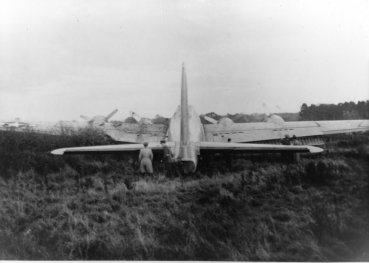
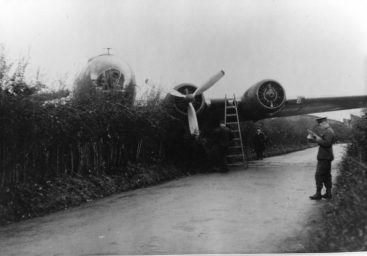
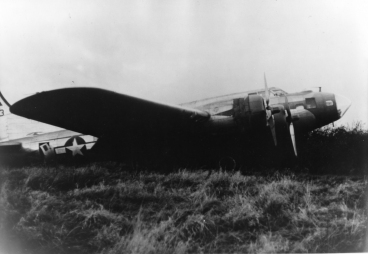
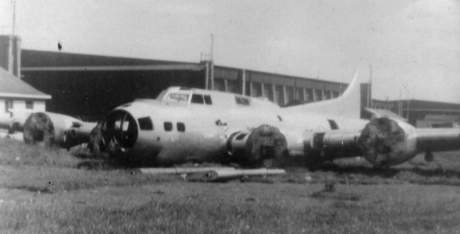
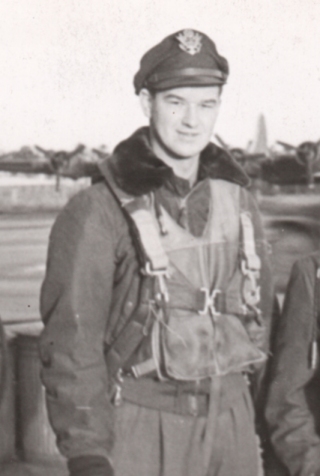 The pilot of the aircraft
was Major Frederick Bancroft Johnson, serial number
O-661102. He was from Canton, Stark County in
Ohio. He normally went by the name 'F Bancroft
Johnson'.
The pilot of the aircraft
was Major Frederick Bancroft Johnson, serial number
O-661102. He was from Canton, Stark County in
Ohio. He normally went by the name 'F Bancroft
Johnson'. 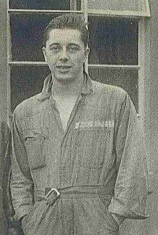 The Engineer was Egon L Eck, a 24
year old from Cleveland, Ohio. The son of Egon and Anna
Eck, immigrants from Romania, Egon himself having been
born in Romania in 1921 but was actually of German
extraction. By the 1940 US national census, Egon was
working as a car mechanic and he enlisted in the armed
forces in July 1942. He is found in morning reports in
late 1943 stations at McClellan Air Base in California
and being assigned to an overseas shipment of personnel,
and in January 1944 he is located in England at Army air
Force Stations 534, Cuddington, Cheshire, and 594, Stone
(Jefferson Hall) Staffordshire which housed Replacement
Control Depots. By April 1944 he is found in
Burtonwood with the 328th Service Squadron of the 325th
Service Group.
The Engineer was Egon L Eck, a 24
year old from Cleveland, Ohio. The son of Egon and Anna
Eck, immigrants from Romania, Egon himself having been
born in Romania in 1921 but was actually of German
extraction. By the 1940 US national census, Egon was
working as a car mechanic and he enlisted in the armed
forces in July 1942. He is found in morning reports in
late 1943 stations at McClellan Air Base in California
and being assigned to an overseas shipment of personnel,
and in January 1944 he is located in England at Army air
Force Stations 534, Cuddington, Cheshire, and 594, Stone
(Jefferson Hall) Staffordshire which housed Replacement
Control Depots. By April 1944 he is found in
Burtonwood with the 328th Service Squadron of the 325th
Service Group.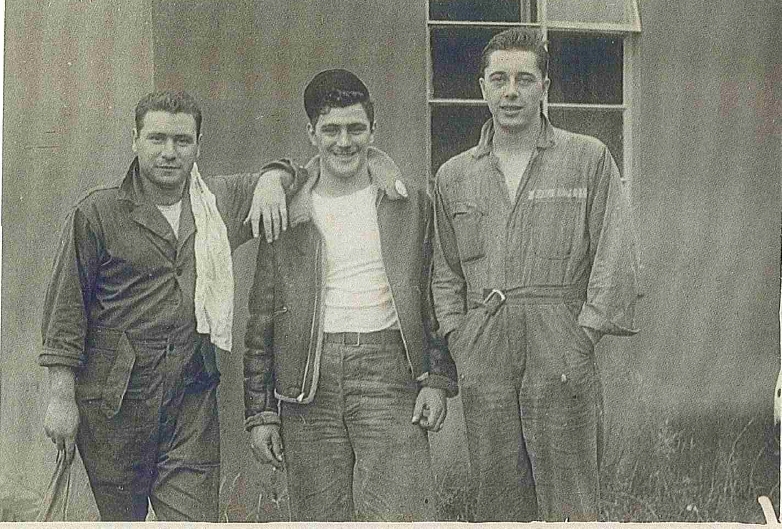
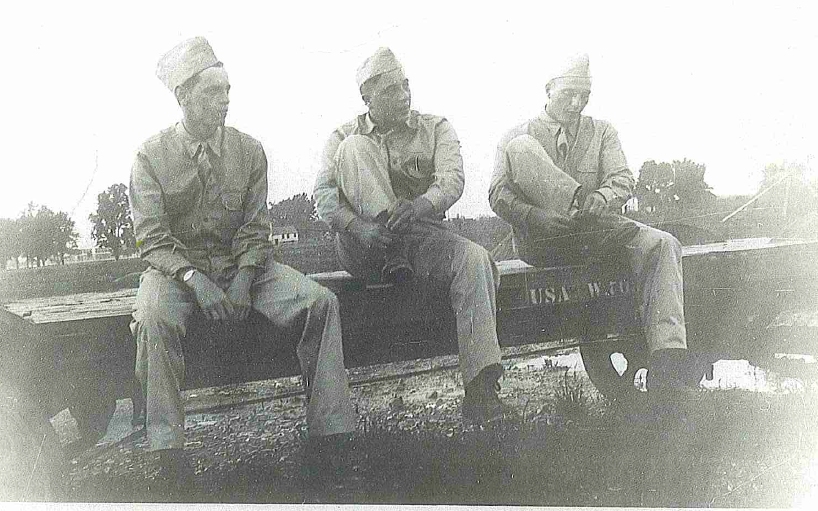
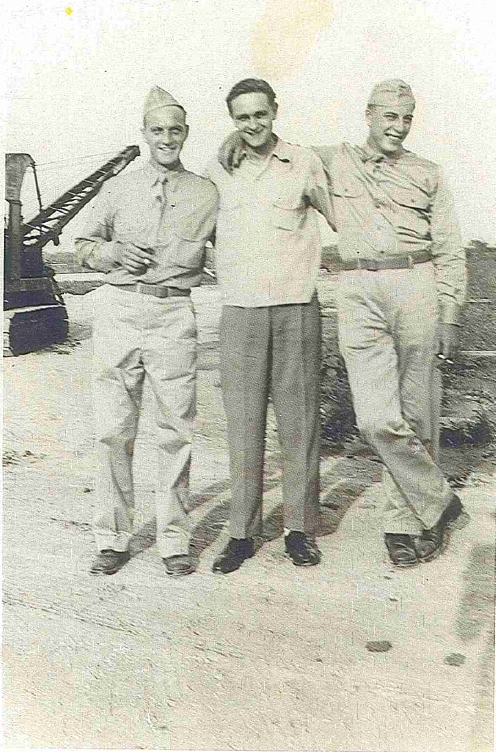
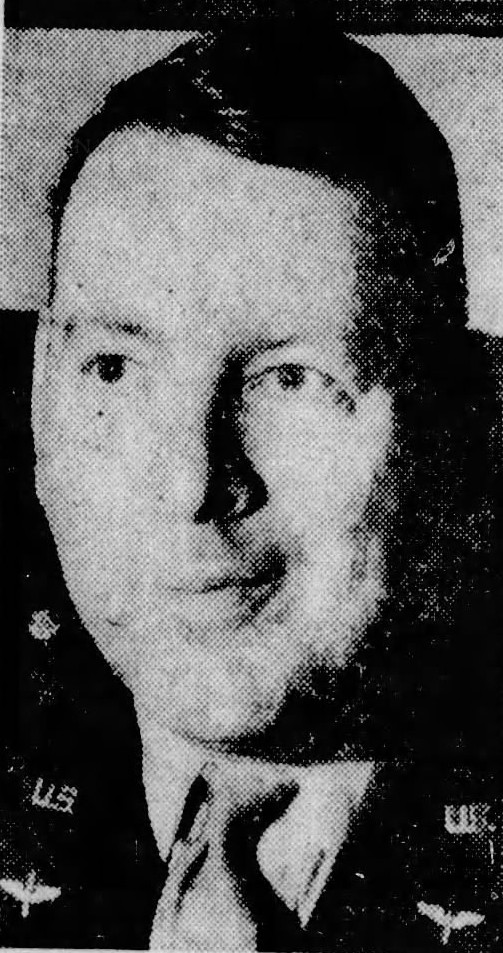 The passenger on the aircraft was a non
flying officer of the Air Force, Colonel James Joseph
Shown. He was born in 1905 to Nellie and James V
Shown.
The passenger on the aircraft was a non
flying officer of the Air Force, Colonel James Joseph
Shown. He was born in 1905 to Nellie and James V
Shown.